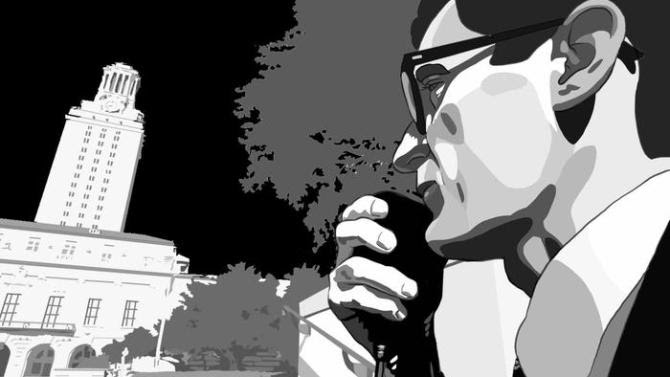The reporting of mass shootings, like the coverage of sports scores or the weather forecast, has become a routine. With each new incident, we see an anxious reporter standing in front of a tangle of caution tape, illuminated by a chiaroscuro of flashing police lights. A stretcher is wheeled away in the background, and then several more, and then we hear the running total of fatalities. We understand the pain of what we are seeing, but the familiarity of the experience has dulled our ability to empathize with the victims.
In reporting the 1966 University of Texas shootings, the documentary “Tower” could have repeated this formula. It could easily have told, via disinterested voiceover, how a 25-year-old gunman mounted the clock tower at UT Austin and killed 17 people. While the camera panned over grainy black-and-white photos of the destruction, the narrator could have informed us that this was the deadliest mass shooting until the 2007 Virginia Tech massacre, thus cementing the shooting as historical curiosity and not an actual experience in which real people lost their lives.
“Tower” succeeds by doing none of these things. Unlike other reportings of tragedy — which discredit their subject by placing a pane of glass between their audience and their victims — “Tower” presents the shooting in a vibrant, visceral style achieved through animation. This allows us to see the tragedy not through the cold, clinical detachment of a reporter or historian but through the startled eyes of those who lived through the experience. The animation (technically rotoscoping, in which animators trace over film footage for a surreal effect) gives its story a sense of subjectivity: Colors dim as characters become more afraid, shootings are shown in striking silhouette, and the tower looms (often impossibly) in the background of nearly every shot.
Though the film’s subjectivity makes it more harrowing than most, “Tower”’s defining feature is actually its humanity. Director Keith Maitland wisely interrupts scenes of carnage with moments of sentimentality, such as a rose-tinted flashback of a central character’s romantic past and a tender moment of solidarity between a victim and a bystander. Most moving, however, is a moment near the film’s end, where a surviving victim is asked if she can forgive the shooter. “How can I hate?” she replies. “How can I not forgive? I’ve been forgiven so much.”
Ultimately, “Tower” proves a sober viewing that looks beyond the cynicism of mass shootings and asks the audience to consider the lives affected. It’s a disquieting film, but one that should be required viewing for those who feel numb to the unceasing reports of tragedy in this day and age. It is often said that today’s cultural landscape has desensitized violence, but “Tower”’s sensitivity may begin to reverse this trend. At the very least, it pushes past the caution tape cordoning off disaster and implores its viewer to think carefully about the lives being lived inside.
Contact Rey Barcelo at rbarcelo ‘at’ stanford.edu.
